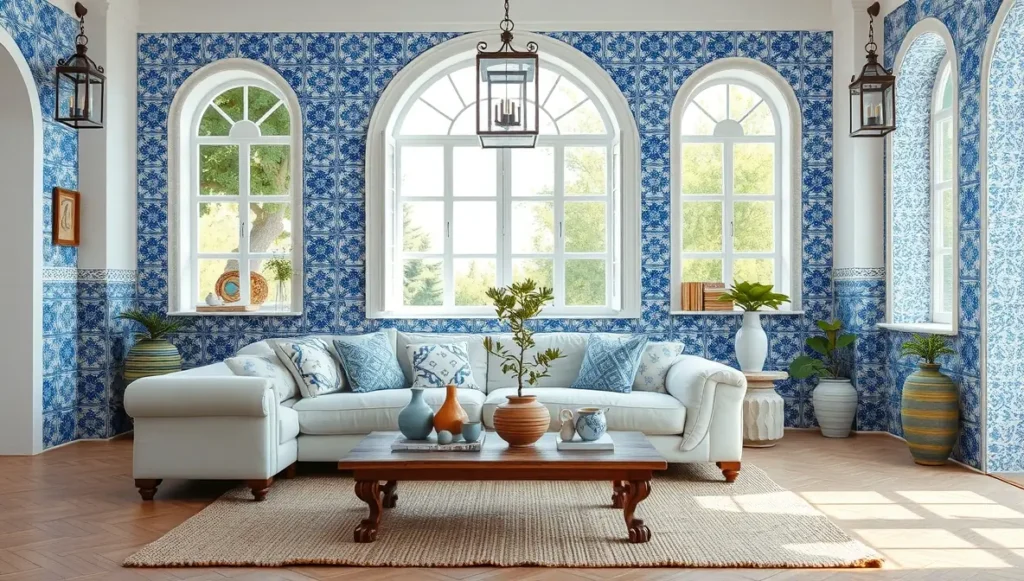- The Timeless Beauty of Portuguese Azulejo: A Designer’s Guide to Bringing Historic Charm into Modern Interiors - September 4, 2025
- Mastering Nautical Interior Design: Beyond the Obvious Anchors and Ship Wheels - September 4, 2025
- Bringing the Tropics Home: A Complete Guide to Tropical Interior Design - September 2, 2025
Table of Contents
After 15 years of working with clients across Europe and the Americas, I’ve witnessed countless design trends come and go. Yet there’s one style that has consistently captured my imagination: Portuguese Azulejo. This isn’t just another decorative tile trend – it’s a living piece of history that transforms spaces with unmatched elegance.
My Gateway to Azulejo Magic
I still remember walking through a restored 18th-century mansion in Sintra back in 2006. The walls were adorned with hand-painted blue and white tiles that seemed to breathe life into every room. That moment changed how I approached interior design forever.
Since then, I’ve incorporated Azulejo elements into over 200 projects, from Manhattan penthouses to Tuscan estates. What I’ve learned is that this Portuguese art form offers something rare: authenticity with adaptability.
Understanding Azulejo: More Than Pretty Tiles
The word “azulejo” comes from the Arabic “al zulaycha,” meaning “little polished stone.” These ceramic tiles arrived in Portugal during the Moorish occupation and evolved into something uniquely Portuguese by the 15th century.
Working with genuine antique azulejos taught me that each tile carries historical weight. The slight imperfections in hand-painted lines, the subtle variations in cobalt blue intensity – these aren’t flaws but signatures of human craftsmanship that mass-produced tiles simply cannot replicate.
The Psychology of Blue and White
One aspect that consistently surprises clients is how azulejo’s traditional blue and white palette affects mood. After years of observation, I’ve noticed that spaces featuring authentic azulejo work create what I call “contemplative serenity.”
Sometime back, I worked on a São Paulo project where we installed reproduction 17th-century hunting scenes in a cramped urban apartment. The narrative quality made the 800-square-foot space feel significantly larger while creating a peaceful sanctuary for a stressed executive.

Room-by-Room Application Guide
Kitchens: Where Function Meets Beauty
Backsplashes: I recommend geometric patterns over narrative scenes for kitchen backsplashes. The repetitive nature of cooking pairs perfectly with geometric rhythms. For a Charleston project, we used traditional “rope pattern” azulejos that created visual movement without distraction.
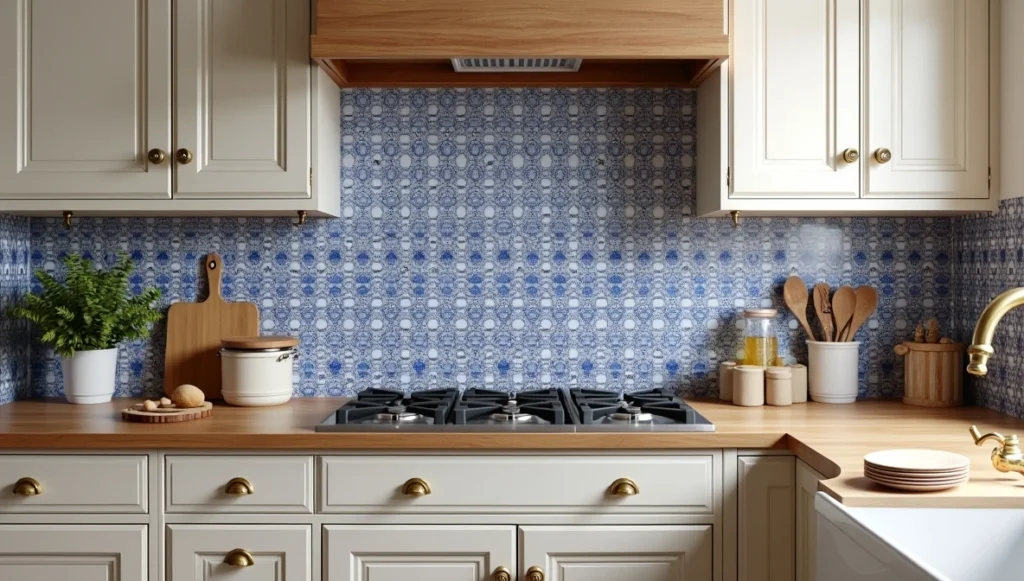
Full Wall Treatment: In larger kitchens, extending azulejos from counter to ceiling on one accent wall creates drama. A Sonoma farmhouse installation featuring fruit and vegetable motifs connected the indoor cooking space with the clients’ garden passion.
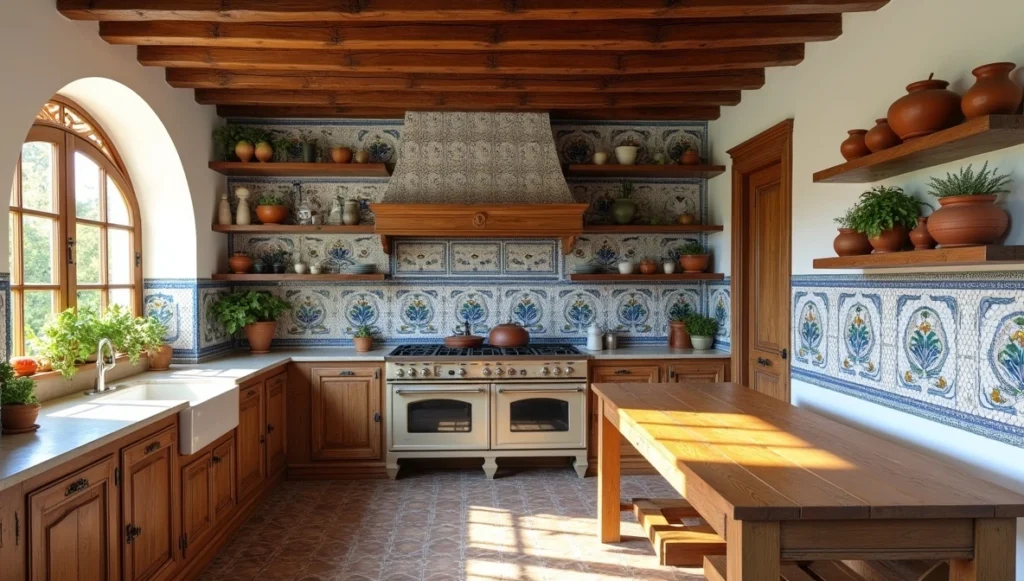
Bathrooms: Natural Azulejo Territory
Powder Rooms: Small guest bathrooms offer perfect canvases for bold statements. I once covered every wall of a 4×6 foot powder room in hunting scene azulejos, turning a utilitarian space into an art gallery.
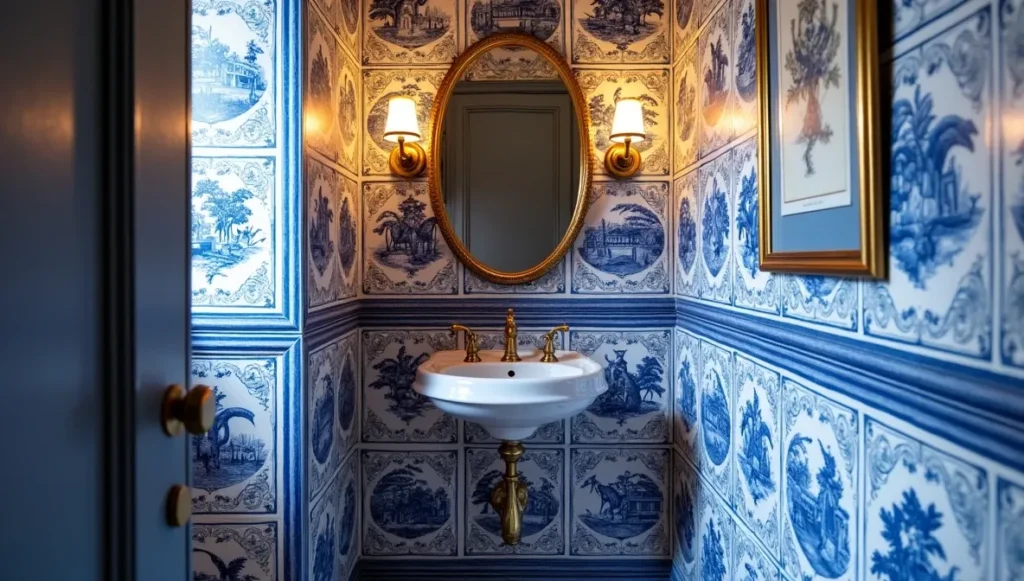
Master Baths: For larger bathrooms, I combine azulejo accent areas with neutral materials. Behind freestanding tubs works beautifully – curved tub lines create lovely contrast with geometric tile patterns.

Living Spaces: Creating Focal Points
Fireplace Surrounds: Replacing standard surrounds with azulejo creates stunning focal points. For a Westchester Tudor revival, we installed Delft-style azulejos around the fireplace, transforming dated brick into the room’s star feature.

Accent Walls: The sofa wall often works perfectly for azulejo treatment, but scale matters enormously. Large sectionals can handle elaborate patterns while delicate antiques need simpler approaches.
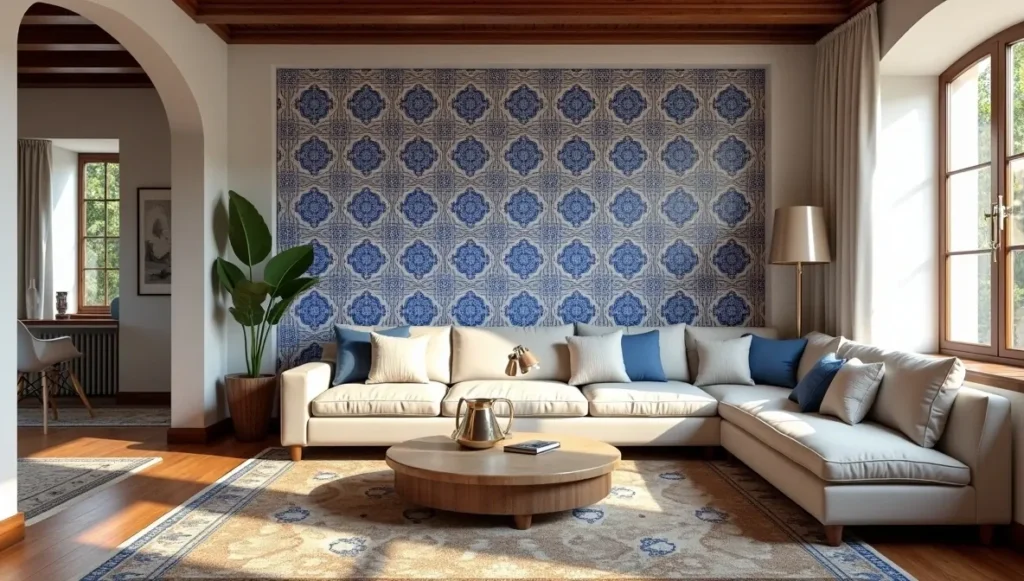
Dining Rooms: Formal Elegance
Wainscoting Revival: Traditional Portuguese dining rooms featured azulejo wainscoting topped with painted plaster. I recreate this by installing narrative panels to chair rail height, then painting upper walls in complementary colors.

Statement Walls: Full dining room azulejo creates restaurant-quality drama when done right. A Napa Valley wine collector’s dining room uses vine and harvest motifs that perfectly complement his passion.
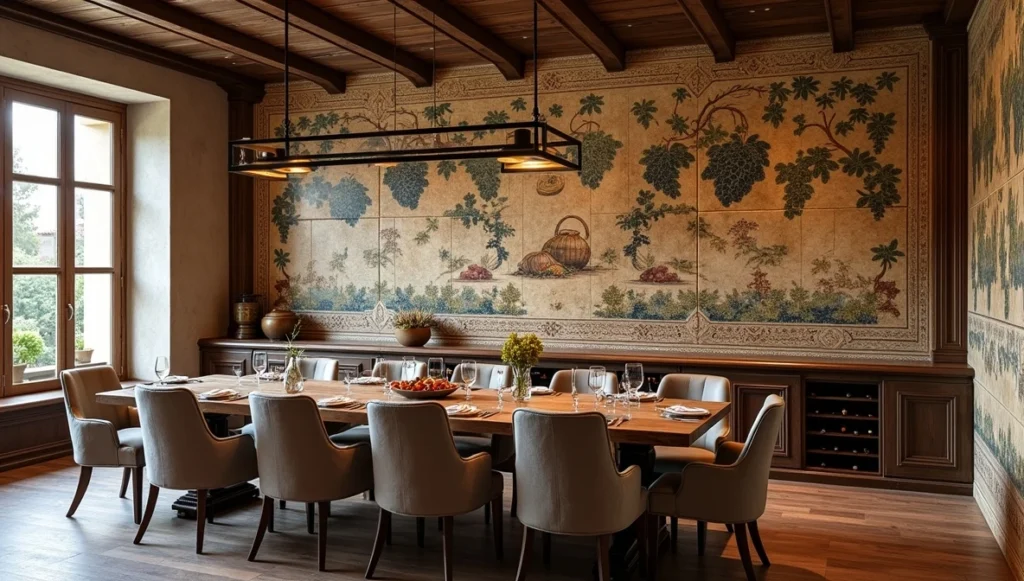
Entryways: First Impression Impact
Grand Entrances: Two-story foyers can handle dramatic installations that would overwhelm smaller spaces. A Boston brownstone entrance featuring maritime scenes creates immediate “wow factor” while setting expectations for the entire home.
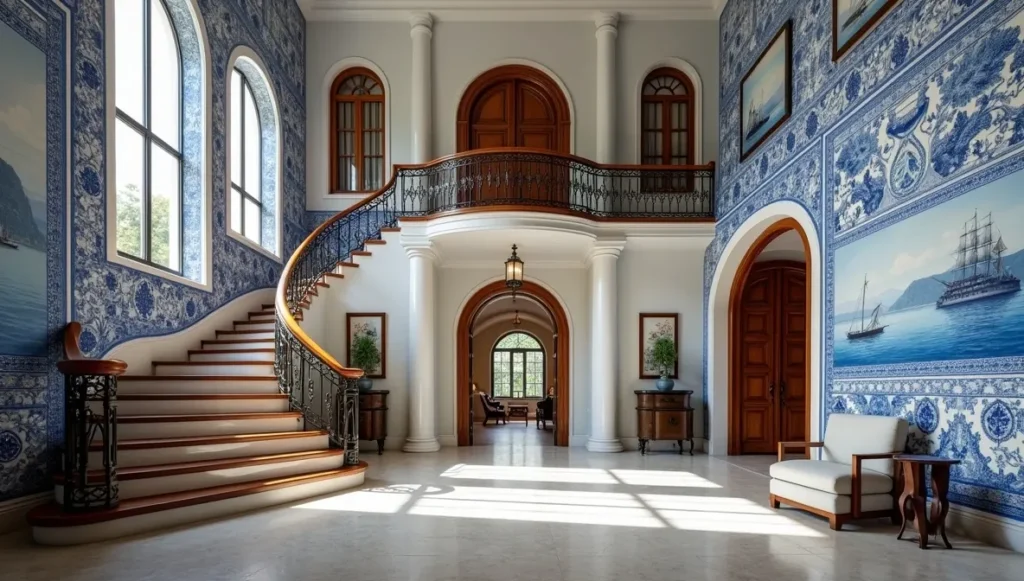
Sourcing: Authentic vs. Contemporary
Antique Hunting
Finding genuine antique azulejos requires patience and connections. I work with dealers in Porto, Lisbon, and São Paulo who provide clear provenance documentation. Authentic pieces range from $50-$300 each, depending on rarity and condition.
Quality Reproductions
For most projects, I recommend exceptional contemporary reproductions from companies like Viúva Lamego and Sant’Anna, who still hand-paint using traditional methods. These offer historical authenticity at $15-$40 per tile – a fraction of antique costs.
Essential Design Principles
Scale Awareness: Early in my career, I used traditional 4×4 inch tiles in a modern room with 12-foot ceilings. The result looked busy and undersized. Now I carefully consider proportions, sometimes commissioning custom sizes for contemporary spaces.
Frame Your Narratives: Azulejo panels work best when they feel intentional. I use simple border tiles to frame narrative scenes, creating artwork effects rather than random decoration.
Balance Pattern Intensity: Follow my 70-30 rule – if azulejos cover 30% of visible wall space, the remaining 70% should be relatively calm and neutral.
Investment and Maintenance Insights
Quality azulejo installations are significant investments, but my experience shows they add substantial property value. Unlike trendy materials that date quickly, azulejos have proven staying power. Clients who installed features fifteen years ago still express daily pleasure in their decision.
Properly installed azulejos age beautifully. The glazed surface resists staining and requires only gentle cleaning with pH-neutral solutions. However, installation quality matters enormously – always work with experienced ceramic installers.
Why Azulejo Endures
After all these years, what continues to draw me to azulejo design isn’t just aesthetic beauty – it’s the way these tiles connect us to human stories. In our increasingly digital world, there’s something profound about surrounding ourselves with art created by hand, carrying forward techniques perfected over centuries.
Every azulejo installation I complete becomes part of a continuing story that began in medieval Moorish workshops and continues in contemporary Portuguese ateliers. When clients understand they’re not just decorating but participating in living cultural tradition, their relationship with their space transforms completely.
Whether you’re considering a single statement wall or comprehensive azulejo scheme, remember that you’re not just choosing tiles – you’re choosing to become part of a story that has been five centuries in the telling and shows no signs of ending.
